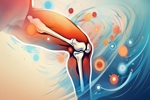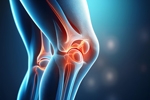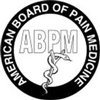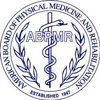Home »
Blog » Knee Pain
| Stem Cell, PRP, Acupuncture in Queens & Long Island, New York
Knee Pain | Stem Cell, PRP, Acupuncture in Queens & Long Island, New York
Tags: Knee Pain | Posted on: 14-Mar-2025 | No of views: 699 Knee pain can limit mobility and affect daily life, but physical therapy offers an effective, non-invasive solution. By reducing inflammation, strengthening muscles, and improving movement patterns, physical therapy helps restore function and prevent future injuries. From stretching and strengthening exercises to low-impact aerobic conditioning, targeted therapy can provide lasting relief. Whether managing arthritis, recovering from injury, or avoiding surgery, physical therapy plays a key role in knee pain treatment. Discover how a structured program can help you regain mobility and improve your quality of life.
Read more
Tags: Knee Pain | Posted on: 12-Mar-2025 | No of views: 740 Radiofrequency neurotomy of the genicular nerves is a minimally invasive procedure designed to reduce chronic knee pain by disrupting pain signals. Using fluoroscopic guidance, a physician injects local anesthetic and applies radiofrequency energy to target the genicular nerves. This treatment is ideal for patients with knee osteoarthritis who cannot undergo or prefer to avoid joint replacement surgery. Many patients experience significant pain relief and improved mobility, with studies showing better outcomes compared to corticosteroid injections. Radiofrequency neurotomy offers a promising alternative for long-term knee pain management.
Read more
Tags: Knee Pain | Posted on: 10-Mar-2025 | No of views: 726 Knee osteoarthritis is a progressive condition that causes pain, stiffness, and swelling, affecting mobility and daily activities. While it worsens over time, early intervention with physical therapy, weight management, and targeted exercises can slow progression and improve joint function. Non-surgical treatments, such as PRP therapy, bracing, and pain management techniques, can help relieve symptoms. In severe cases, surgical options like osteotomy or total knee replacement may be necessary. Understanding risk factors, symptoms, and treatment options is key to maintaining mobility and reducing discomfort.
Read more
Tags: Knee Pain | Posted on: 26-Feb-2025 | No of views: 776 Staying active with knee pain may seem challenging, but the right exercises can improve mobility, strengthen muscles, and reduce discomfort. Low-impact activities like walking, water exercises, and targeted stretches help maintain joint flexibility while minimizing stress. Proper warm-ups, good footwear, and post-workout care like heat and ice therapy can also aid in pain management. With consistency, moderate exercise can lead to better knee function and less pain over time.
Read more
Tags: Knee Pain | Posted on: 24-Feb-2025 | No of views: 823 Hyaluronic acid injections, also known as viscosupplementation, provide a minimally invasive solution for knee pain caused by arthritis and joint deterioration. By replenishing the knee’s natural lubricating fluid, these gel injections help reduce pain, stiffness, and inflammation, often delaying the need for surgery. Many patients experience relief for up to six months after treatment. This safe and effective therapy enhances mobility, making it a valuable option for those struggling with chronic knee discomfort.
Read more
Tags: Knee Pain | Posted on: 21-Feb-2025 | No of views: 828 Knee pain can arise from injuries, overuse, or chronic conditions like arthritis. Common causes include ACL tears, meniscus injuries, bursitis, and osteoarthritis. Poor habits like wearing unsupportive shoes or skipping warm-ups can worsen symptoms. Treatment options range from physical therapy and medication to advanced interventions like corticosteroid or PRP injections. With proper care, you can manage knee pain effectively and improve your mobility and quality of life.
Read more
Tags: Knee Pain | Posted on: 31-Jan-2025 | No of views: 849 Patellofemoral Pain Syndrome (PFPS), often referred to as “runner’s knee,” is a common condition characterized by pain in the front of the knee and around the patella (kneecap). It affects individuals of all ages but is particularly prevalent among athletes and those who engage in repetitive knee-bending activities. Left untreated, PFPS can significantly impact mobility and quality of life. At Precision Pain Care and Rehabilitation, we aim to shed light on this condition and explore how interventional pain management can offer lasting relief.
Read more
Tags: Knee Pain | Posted on: 29-Jan-2025 | No of views: 813 Patellar tendonitis, often referred to as “jumper’s knee,” is a common overuse injury that affects the patellar tendon, a crucial structure connecting the kneecap (patella) to the shinbone (tibia). While this condition is frequently seen in athletes who engage in activities involving repetitive jumping or running, it can also affect individuals whose lifestyles or occupations place prolonged stress on the knee joint.
Read more
Tags: Knee Pain | Posted on: 27-Jan-2025 | No of views: 938 Knee bursitis is a common yet often misunderstood condition that can significantly impact daily activities, mobility, and overall quality of life. At Precision Pain Care and Rehabilitation, we aim to help patients understand their pain and provide effective treatment options, including advanced interventional pain management techniques. Let’s delve into the causes, symptoms, and treatments for knee bursitis.
Read more
Tags: Knee Pain | Posted on: 24-Jan-2025 | No of views: 1017 Knee pain is a common complaint among individuals of all ages, and one specific cause, Chondromalacia Patella, is often misunderstood. This condition affects the cartilage under the kneecap, leading to discomfort and potentially limiting mobility. At Precision Pain Care and Rehabilitation, we approach this issue through advanced interventional pain management techniques to help patients regain their quality of life.
Read more
Love this Post? Spread the World
























